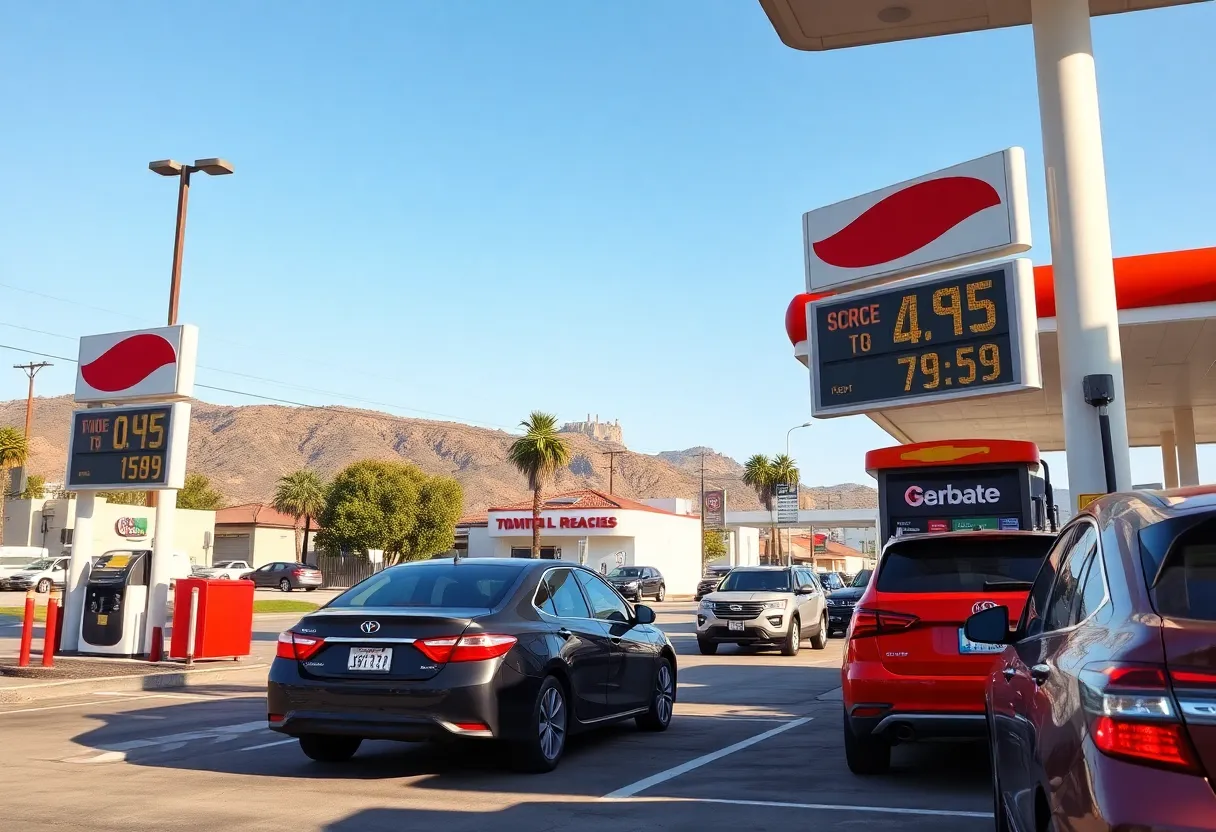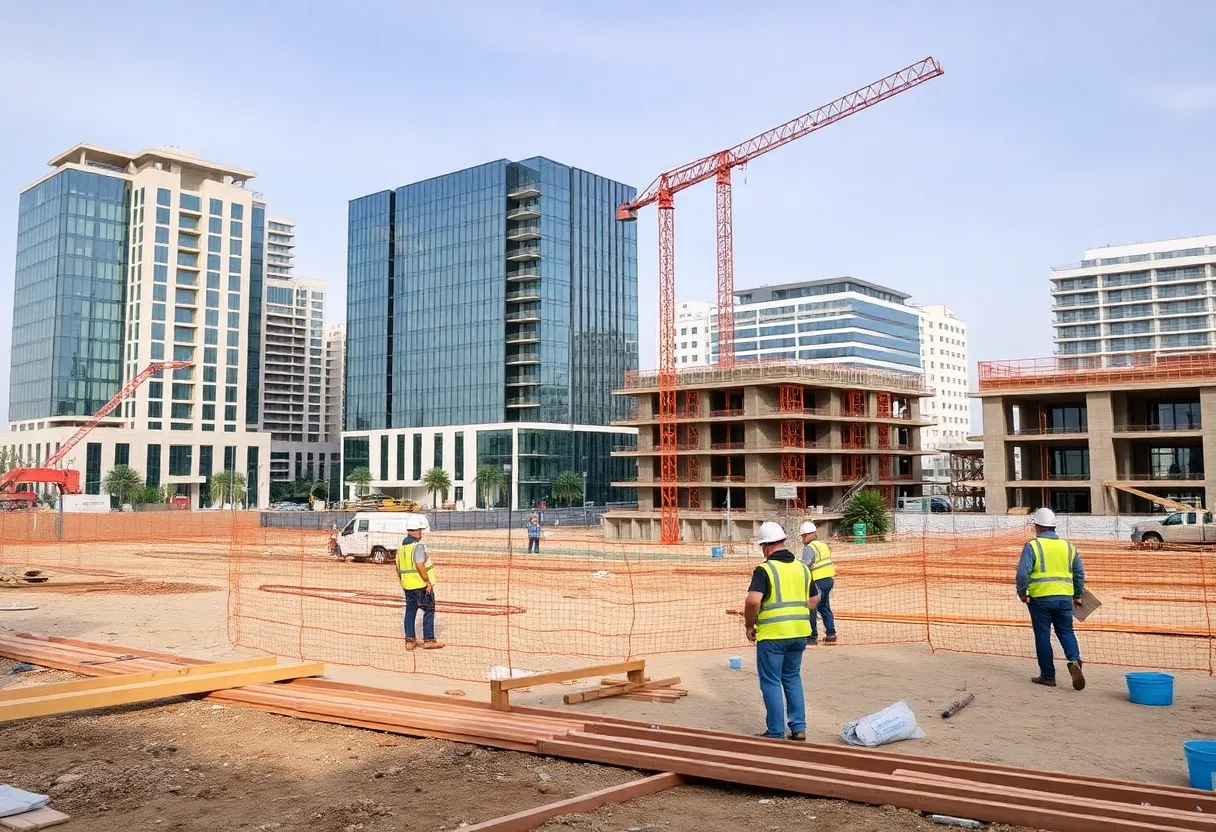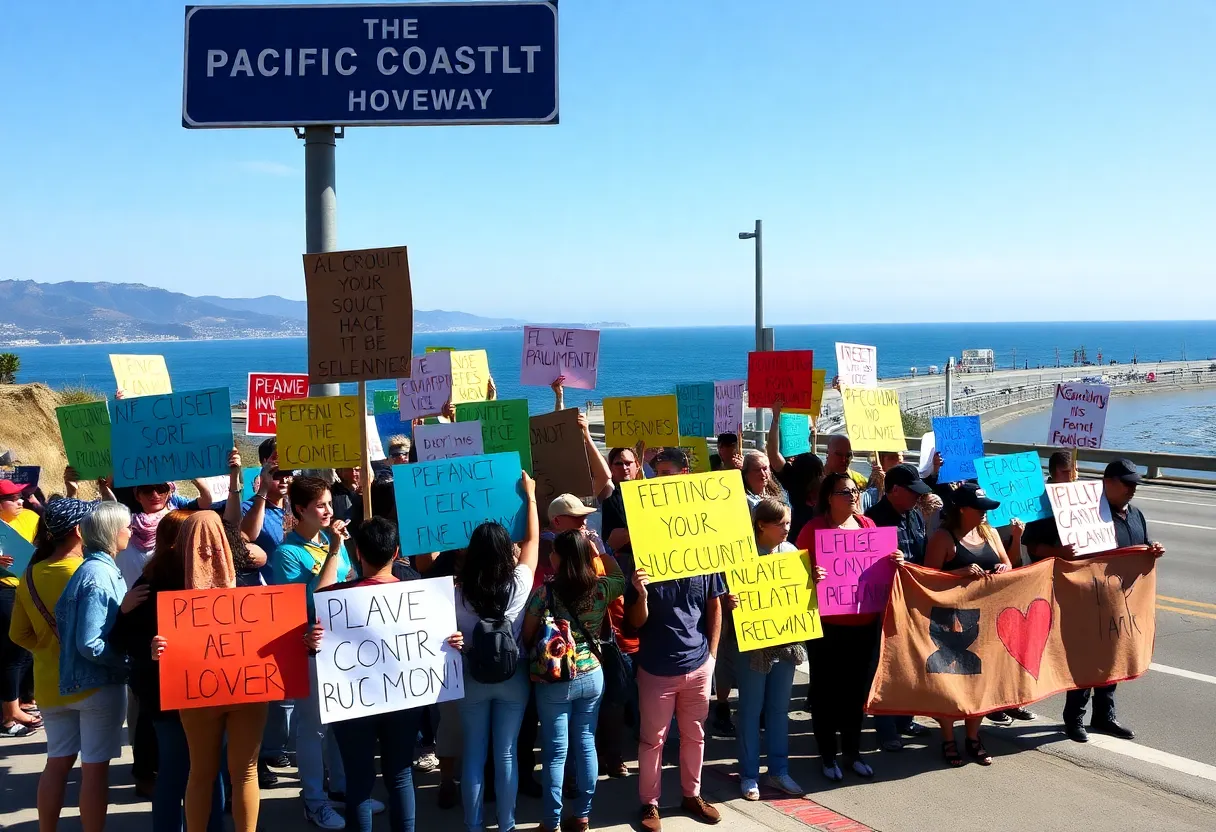News Summary
Residents in Los Angeles are facing persistent high gasoline prices, currently averaging $4.519 per gallon. Despite a slight dip from last week, the increase in energy costs poses economic challenges for families. Much of California’s struggles with fuel prices result from refinery shutdowns and an overreliance on imported crude oil. Analysts predict prices could soar by 2026, further stressing consumers and impacting local job security.
Gas Prices in Los Angeles Remain High Despite Recent Changes
In the bustling city of Los Angeles, residents are grappling with the ongoing reality of high gasoline prices. The average price of a gallon of self-serve regular gasoline currently sits at 4.519, which hasn’t budged since the end of January. Although it’s comforting to see that prices have dipped by 3.9 cents from last week, they’re still 21.7 cents lower than last year, which offers a slight sigh of relief for drivers.
Price Trends in the Region
Right across town, Orange County boasts a slightly better average at 4.461. Here too, the price is at its lowest since January, having fallen just a tad by 0.2 cents recently. As residents fill up their tanks, they might find themselves 4.3 cents better off than 11 days ago and 19.1 cents below last year’s rates. It seems like there’s a silver lining where prices are concerned, but there are deeper issues at play.
National Overview
Diving into the bigger picture, the national average for gasoline sits at 3.153. While it’s remained unchanged from last week, it’s a modest increase from last month. Luckily for the rest of the country, this average is still 36.9 cents less than it was last year. Whispers of falling prices abound, yet our golden state faces a different set of challenges that keep prices stubbornly high.
California’s Refinery Woes
One of the principal reasons for these soaring prices is that California has witnessed over 30 refinery shutdowns in recent decades, drastically diminishing its gasoline production. As we currently stand, the state is left with just nine major gasoline-producing facilities. Two more, operated by Phillips 66 and Valero, are poised to close, slashing daily production capacity by 284,000 barrels—that’s nearly 18% of the total refining capabilities.
Future Prices on the Horizon
Looking ahead, experts warn that if these closures proceed, we could see gas prices skyrocket, with predictions ranging anywhere from 7.348 to 8.435 per gallon by the year 2026. This potential surge in prices is unsettling, especially for working-class families who already feel the pressure from rising fuel costs.
Import Dependency and Environmental Concerns
Despite California boasting significant oil reserves, the state primarily relies on imported crude oil. This dependence is problematic, particularly due to the lack of major pipelines for oil transport, forcing the state to rely on ships. Unfortunately, this delivery method can take between 30 to 40 days and raises environmental concerns due to pollution caused by shipping.
Economic Burdens on Families
As if soaring prices weren’t enough, new state policies including an excise tax that adds around 2 cents to every gallon are further stacking the deck against consumers. Families are increasingly feeling the pinch, faced with tough choices between fueling their cars and covering other essential expenses.
Job Concern and Regulatory Challenges
The potential refinery closures also bring job security into the spotlight. State officials are voicing fears about the job losses affecting hundreds of workers and contractors, casting a shadow over communities already struggling with economic pressures. Moreover, California’s regulatory bodies seem to be lagging in calculating the full economic impact of their proposals, making many wonder if relief is on the way.
The Bottom Line
With gas prices remaining high and future predictions looking grim, Californians are in for a bumpy ride. As the state teeters on the edge of a fuel crisis amid environmental policies, residents are left questioning how they’ll navigate this ongoing struggle. The reality is that without significant changes in production or transportation methods, the transition to alternative fuels may leave many behind. For now, all we can do is hold onto our wallets tightly.
Deeper Dive: News & Info About This Topic
HERE Resources
Los Angeles Gas Prices Slightly Drop
Gas Prices Drop in Los Angeles, Offering Relief to Drivers
Huntington Beach Plans Major Oil Land Transformation
Price Drops in Los Angeles But Future Concerns Loom
California Gas Prices Set to Rise: What to Expect
Gas Prices in Los Angeles and Orange Counties Drop
Gas Prices Drop in Los Angeles and Orange Counties This Independence Day
Huntington Beach Celebrates 121st Annual Fourth of July Parade and Festival
Gas Prices Drop in Los Angeles Ahead of Independence Day
Gas Prices on the Rise in California: What You Need to Know
Additional Resources
- Stacker: How Gas Prices Have Changed in Los Angeles Last Week
- Wikipedia: Gasoline
- KTLA: Filling Up Will Cost a Little More Starting Tuesday
- Google Search: Gas Prices California
- LA Times: California Gasoline Costs, Refineries, and Pollution
- Encyclopedia Britannica: Fuel
- Desert Sun: Gas Prices Go Up in California
- Google News: California Gas Prices







